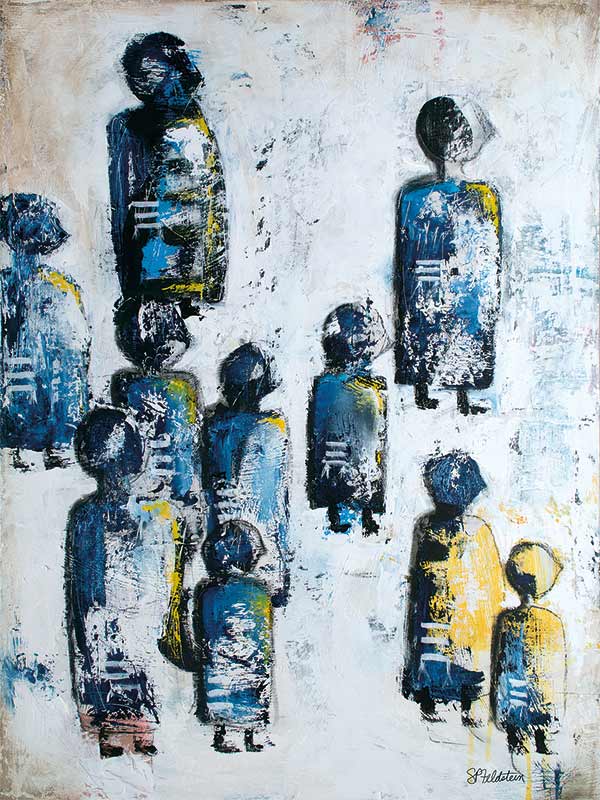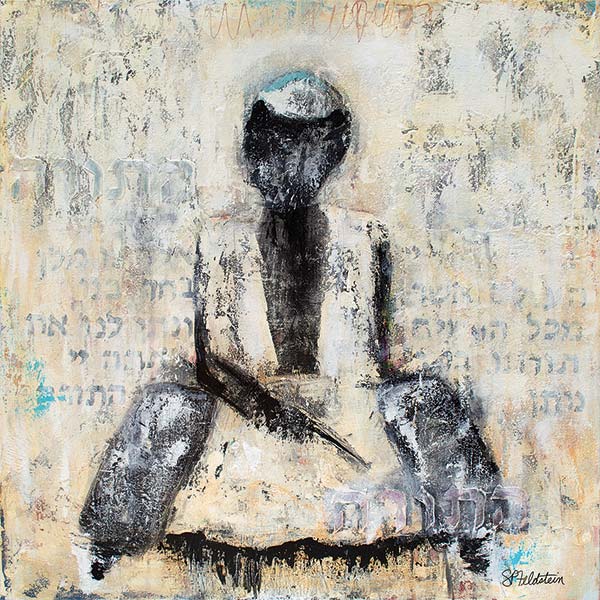Subtotal: $
Checkout-

Desiring Silence
-

Uncle Albert
-

Soldier of Peace
-

The Chocolate Ice Cream
-

Poem: “The Revenant”
-

Poem: “L’esthétique de la Ville”
-

Poem: “When You Pursue Me, World”
-

Gazapillo
-

Editors’ Picks: God Loves the Autistic Mind
-

Editors’ Picks: Damnation Spring
-

Editors’ Picks: Life between the Tides
-

The Faces of Our Sons
-

Remembering Tom Cornell
-

Letters from Readers
-

Monica of Thagaste, Mother of Augustine
-

Covering the Cover: Generations
-

A Legacy of Survival
-

Daughter of Forgottonia
-

Giving Your Children Your Words
-

Book Tour: On Being a Good Ancestor
-

Ten Theses on Intergenerational Stewardship
-

Inheriting Mental Illness
-

Yearning for Roots
-

Fear of a Human Planet
-

Reviving the Village
-

Is There a Right to Have Children?
-

The Stranger in My House
-

The Sins of the Fathers
-

My Father Left Me Paperclip
-

Decoding the Bible’s Begats
-

The Name of My Forty-Sixth-Great-Grandfather
-

Somewhere in Chessington

Singing the Law
Chanting the Torah joins past generations to generations yet unborn.
By J. L. Wall
February 10, 2023
My second daughter arrived on her own schedule, gradually and then suddenly: eight days late, an induced labor in which nothing seemed to happen for twenty-four hours while I paced and read while my wife waited more patiently – and then, there she was.
I spent the weeks before her birth pacing the house and fidgeting in my chair. I was eager for her arrival, of course, but this need to burn impatient energy was also my reaction to an absence. I wasn’t spending my free evening hours learning the Torah reading for the coming week – and I could, somehow, feel this in the muscles of my arms.
Jews have gathered to hear the Torah read aloud since the time of Ezra the Scribe, at the return from the Babylonian exile, when the people assembled to hear him read. This was a moment of refounding a nation, of reforging a link across the generations after a half-century of exile. What came after could not be the same, exactly, as that which preceded it: the Judaism that followed could not help but be more aware of its precarity.
The role of the Torah changed too. Not only a historical record or a code of laws, it also became a document to be performed in the hope that this might help ensure continuity from one generation to the next.
And so reading from the Torah stands at the center of Shabbat morning services in all denominations of Judaism. Learning to do this reading – or leyning, as it’s commonly called (from the Yiddish leyenen, “to read”) – has, in its turn, become the central element of bar and bat mitzvah study that lead to Jewish adulthood. Most of us, of course, do not go on to become a ba’al kriyah, a Torah reader; few ever leyn again. Chalk this up to just another failure of American Judaism: we treat bar mitzvah study as preparation for checking a box, not an ethic that permeates the life to come.

Sharon Feldstein, Facing East, acrylic on canvas, 2020. All artwork used by permission.
I write this as one of those failures: the star Hebrew-school student at a suburban Reform synagogue who could grasp the language faster than anyone else but who had a tin ear and couldn’t read the sheet music the rabbis placed in front of me. I checked the bar mitzvah box. Time passed; I drifted toward Modern Orthodoxy, where the lengthy Torah readings, on an annual rather than triennial schedule, were even more daunting.
Leyning is an acquired skill and a time-consuming task, one of the reasons that non-Orthodox denominations no longer read the full Torah portion each week. In Orthodox synagogues, it’s a community effort to read the Torah in part because it has to be: if you want your rabbi to do any of the other tasks associated with the job, he simply can’t cover all the leyning.
This is because, despite its name, the practice doesn’t just involve reading. The text of each week’s Torah portion is chanted according to a precise cantillation system (trop in Yiddish, te’amim in Hebrew). And this isn’t as simple as learning a new song each week, or applying a comfortable melody to new words. The text is prose – and, as contained within a Torah scroll, without either vowels or cantillation markers. Individual te’amim signal not a single note, but a distinct sequence, some easy and some more complex, at times placing a dozen notes on a single syllable. At others, they require you to know variations based on the sequence in which they appear. There are patterns that grow familiar with practice, but there aren’t true melodies.
I learned to pray in Hebrew and, inconsistently, to set aside time to study the Talmud’s intermingled Hebrew and Aramaic. But the Bible remained, for me, an English book.
The college town I call home is not the wilderness of anything except Orthodox Judaism, and summers at shul are especially sparse once the students leave campus.
By the summer of 2021, our pandemic policies had burned out the members who regularly read Torah, led services, or simply showed up on time for minyan, the quorum of ten required to hold services. To others, the new rules gave permission for apathy. Fright thinned our numbers even further. Some families simply moved away. It was under these circumstances that I agreed to serve as the shul’s interim president as we tried to pull ourselves out of Covid-induced doldrums.
One of the first tasks that fell to me in my misguided summer on a synagogue board was calling congregants late in the week to ask them to take on even more leyning. “This isn’t easy,” one of them, a talented man who has taken on more than his share for decades now, explained: “I spend hours and hours preparing every week.” He sighed, then took on an unfairly large set of readings: shul must go on.
And that, more or less, is also how I was drawn back to leyning two decades after my bar mitzvah. Shul had to go on; the Torah needed to be read, so I sat teaching myself to do what had, in adolescence, felt impossible. (And still, among my community’s handful of regular Torah readers, I am the least melodious and least capable.)
A year later, as our summer ranks thinned again, I couldn’t guarantee that I’d be in shul, since I was awaiting the birth of my second daughter. Even if it left a significant burden on the few others available to leyn, I couldn’t make the commitment.
So I paced. I could feel the absence in my forearms. It was physical.
It’s a strange practice, this almost-singing of the Torah. If you ask why it’s done, the first answer you’re likely to hear is that it clarifies the grammar. Hebrew is written without vowels; as it appears in a Torah scroll, it’s also without punctuation. Naturally, this creates ambiguity, even for the fluent readers who have been a minority in Jewish history. Torah trop – the te’amim – signal which syllable should be stressed and which words link together in syntactic units; they clarify where verses begin and end.
To take one example from the Sh’ma: The first passage from Deuteronomy that the prayer includes begins, in English, “You will love the Lord your God.” But the word as it appears in written Hebrew, even with vowels included, still might mean two very different things depending on how the word is pronounced. V’ahavta is perfect: “And you loved.” V’ahavta, stressed on the final syllable, is imperfect: “You will love.” The role of the te’amim is to ensure the correct and precise reading of the Torah, to maintain the continuity of its meaning from week to week and generation to generation.

Sharon Feldstein, O, Jerusalem no. 2, acrylic on wood, 2022.
That’s important. But it doesn’t really answer the question: Why sing? After all, other languages have found systems for clarifying ambiguity that don’t require cantillation. Why not simply memorize the correct accentual stress, rather than a fairly elaborate set of notes?
One answer is beautification. The monks of medieval Europe did not simply copy texts but made them beautiful through calligraphy and illumination. Similarly, a talented ba’al kriyah illuminates the text of the Torah in the way that he reads it – my shul’s rabbi emeritus is a wonderful tenor who uses his voice not for his own acclaim but to express the beauty of Torah itself. But what of a friend of mine, widely acknowledged as a skilled ba’al kriyah, whose voice might be generously described as atonal?
Another answer is memorization: the music aids in the accurate memorization and recitation of the words, both on a weekly basis and across generations. This should ring true: songs are easier to memorize than prose. We can find examples of this across languages and throughout history: the consistent rhythms of oral poetry, for example, may well beautify it – but they also aid in both its composition and memorization.
Jewish tradition locates the origins of this explanation within the Bible itself. The medieval exegete Rashi, for example, glosses a passage from the Talmud (Eruvin 21b) to credit Solomon with the creation of a system of notation for transmitting te’amim. Nedarim 21b cites Rabbi Yitzchak, who holds that the te’amim are the “law of Moses from Sinai”: that is to say, are not just a way of reading Torah, but are themselves a part of the Oral Torah.
These answers bring us back to Judaism’s awareness of its own precarity. It’s not just that, in every generation, there will be those who seek to destroy us. Even without this, Judaism would have faced a crisis of transmission, the need to preserve sacred texts through an initially oral tradition. Most oral traditions lend themselves to the gradual transformation of their texts, but the gift of holy scripture is not meant to be so flexible.
So, why sing the Law? None of these explanations fully answers that question. Each treats the te’amim as a tool, a set of practices to ensure accuracy and to beautify. Chanting the Torah is part of the performance that joins generations week to week and year to year. But the te’amim are not just a means. As Rabbi Yitzchak insists, they are not simply a vehicle for Torah but are themselves Torah. They, too, are transmitted from week to week.
I’m not good at prayer. My mind wanders; I struggle to maintain the kind of intentionality and awareness that Judaism calls kavana. When the mid-century Modern Orthodox philosopher and rabbi Eliezer Berkovits writes of those whose “lips – apparently guided unconsciously – continue to form the words automatically,” whose heads know when to bow and knees to bend, I recognize myself.
Perhaps my own shortcomings can reveal something about the purpose of the te’amim, as a thing worthy in itself of being passed on. Though far from ideal, Rabbi Berkovits notes, “it is no small achievement to have taught the lips to ‘pray’ on their own, without the conscious participation of the heart and mind … they too represent a form of submission of the organic self to the will to pray.” “The prayer of man,” he writes elsewhere in the same essay, “Law and Morality in Jewish Tradition,” “should be human and not angelic,” physical and embodied and not merely “in one’s heart.”
In other words – and this is my own extrapolation from prayer to leyning – perhaps we sing the Torah because it is a way to involve the fullness of our bodies in reciting and transmitting it. Perhaps, in addition to clarifying grammar, syntax, and meaning, leyning’s very purpose is also to force us to attend to the shape of the words in our mouths, to attune not just our minds but our diaphragms to those moments where the syntax pauses and we can breathe naturally.
My Hebrew is limited and I am shaky enough as a singer that I struggle to consciously hold both the fullness of meaning and the right trop in my head at once. As with my distracted prayer, this is less than ideal – but, I hope, serves a purpose. I live too much in my own head. I’m drawn to abstraction, the disinterested study that is academic life. The risk is that my interest in Torah grows purely (even largely) intellectual: too much a part of my decidedly English-speaking mind.
When I leyn, I care no less about the words of the Torah; if anything, I care more. This can’t be separated from the fact that when I leyn, I can’t linger on the meaning because I’m too busy lingering on how the words themselves feel on my tongue, stretched along the notes of the te’amim. And it’s only through this physical and embodied interaction that I’m able to encounter the Torah as Hebrew.
Still, leyning isn’t quite song – and neither is its recitation of the written Torah the actual fulfillment of the mitzvot that are the true melody of Jewish life.

Sharon Feldstein, Reading from the Torah, acrylic on canvas, 2020.
I like to think that in both its sound and its function, leyning is like recitative, those portions of opera and musical theater that are not quite sung but also not exactly spoken. The less glamorous cousin of the aria, recitative communicates the information that builds toward a fully sung climax or response. In an example Leonard Bernstein once gave, recitative passes on information like, “The price of chicken is up three cents a pound.” Or – to use an example from my own leyning – the number of souls in subsections of the tribe of Levi.
Calling leyning and the weekly recitation of the written Torah “recitative” might sound diminishing. It’s anything but. The analogy reveals something further – about Judaism, about observance, about the physical practice of leyning. In this analogy, two of the central acts of Jewish life are moments not of song but of that which precedes it, of recitative: both Sinai – the first giving of the Torah – and the Shabbat reading of the Torah, which inevitably draws the largest shul crowd of the week and for many is a key communal component of observance. Recitative builds toward a response: a choice, a decision, an action.
At Sinai, that response was, “We will do and we will hear.”
But the moment of recitative repeats, week in and week out, highlighting the central drama of Jewish life: the question, again and again, in ways both mundane and significant, of whether to fulfill the mitzvot.
This lives in Torah reading, and in learning and teaching others to leyn, we transmit that drama across generations. We’re taught that every Jewish soul was at Sinai – but what, exactly, does that mean? Perhaps it says something about the eternity of that moment, that it can continue to live in every Jewish choice and action.
Leyning transmits that moment from past to present, l’dor v’dor, from generation to generation. But it also prepares us for it from present to future, attuning the body as well as the mind to the words of Torah, in preparation for assent.
When I had to step away from leyning, my mind missed the hours of preparation only in the abstract: I knew, as a concept, that it was a more valuable way to spend that time than scrolling Twitter or (even) poring over the expected and actual batting statistics of various Chicago Cubs infielders.
But my body felt the absence and longed to return.
Sitting in the hospital on the day after my daughter’s birth, I realized that I had, without thinking about it, begun to scan the open aliyot for that week, wondering absently if I could learn one in the next two days. I couldn’t – not for that Shabbat, at least. (But the week after, well, that was more plausible.)
We named her for the Hebrew word meaning “song,” and spoke to the congregation about her name and our family. None of the words written here were among those I said; there was plenty to tell without them.
Yet I can’t help but believe that all this, too, is contained in her name, is what preceded it, is what helped bring her to be.
Already a subscriber? Sign in
Try 3 months of unlimited access. Start your FREE TRIAL today. Cancel anytime.












































MaryBellemitten
Lovely